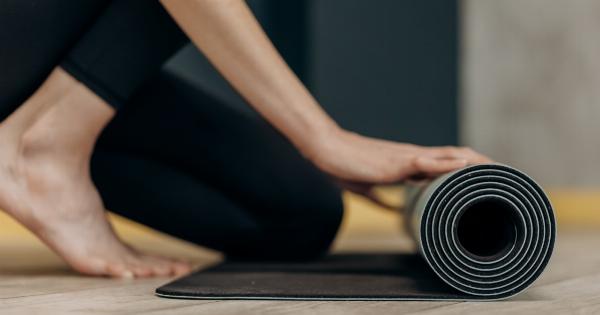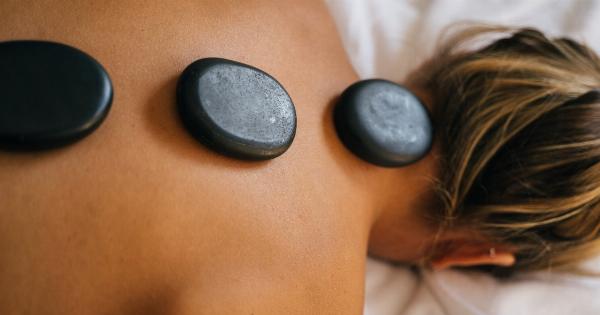Getting a good night’s sleep is essential for maintaining a healthy body and mind. Sleep not only helps our bodies rest and repair, but it also plays a crucial role in our mental and emotional well-being.
One of the factors that can significantly impact the quality of our sleep is our sleeping stance or position.
Why Does Sleeping Stance Matter?
The way we position our bodies while we sleep can have various effects on different parts of our bodies. It can influence our breathing, circulation, and even the alignment of our spine.
A poor sleeping stance can cause discomfort, stiffness, and pain, while a good sleeping stance can promote relaxation and optimal rest. Therefore, it is important to learn about the best sleeping stances that can contribute to a healthy body and mind.
1. On Your Back: The Supine Stance
One of the recommended sleeping stances for a healthy body is lying on your back, also known as the supine stance. This position allows your head, neck, and spine to align, reducing the risk of developing neck and back pain.
It also helps to minimize acid reflux and decrease the chance of developing wrinkles or skin breakouts by avoiding contact between your face and the pillow.
2. On Your Side: The lateral Stance
Sleeping on your side, also known as the lateral stance, is another popular sleeping position. This stance can help alleviate snoring, as it keeps the airways open and reduces pressure on the throat.
If you snore loudly or have sleep apnea, sleeping on your side might be beneficial for you. It can also promote proper digestion by allowing your stomach to stay below the esophagus, preventing acid reflux.
3. On Your Stomach: The Prone Stance
While sleeping on your stomach, also known as the prone stance, can be comfortable for some people, it is generally not recommended as it can strain your neck and spine.
This stance may cause neck and back pain, as well as potential issues with breathing and circulation. If you prefer sleeping on your stomach, try incorporating a thin pillow or no pillow at all to minimize strain on your neck.
4. The Fetal Position: A Cozy Stance
The fetal position involves curling up on your side with your knees drawn towards your chest, resembling the position in which a baby rests in the womb.
This sleeping stance can be particularly comforting for many people and may help alleviate snoring and sleep apnea. However, it is important to ensure that your body remains relaxed, avoiding excessive curvature of the spine.
5. Elevated Head: The Semi-Fowler’s Stance
Sleeping with an elevated head, also known as the semi-Fowler’s stance, involves using multiple pillows or an adjustable bed to raise your head and upper body.
This position is beneficial for individuals who experience acid reflux or heartburn, as it helps keep stomach acid from flowing back into the esophagus. It can also alleviate snoring and improve nighttime breathing for those with respiratory issues.
6. Sleeping with a Knee Pillow
For individuals who suffer from lower back pain, sleeping with a knee pillow can provide relief.
Placing a pillow between your knees while lying on your side helps maintain proper alignment of the hips, pelvis, and spine, reducing strain and discomfort in the lower back. This sleeping stance can improve spinal alignment and reduce pressure on the joints.
7. The Starfish Position: Spreading Out
The starfish position involves sleeping on your back with your arms stretched out above your head. This sleeping stance allows your spine to maintain its natural curve and can help minimize the risk of developing neck and back pain.
However, it is important to ensure that your pillow provides adequate support to prevent strain on your neck.
8. The Soldier Position: Straight and Relaxed
The soldier position is characterized by lying flat on your back with your arms down by your sides. This stance helps distribute your weight evenly and keeps your spine properly aligned.
It can be beneficial for individuals who experience acid reflux or those who wish to prevent wrinkling and sagging of the breasts or face by avoiding contact with the pillow.
9. Combination Sleeping
Many individuals naturally shift positions during the night, often transitioning between back, side, and stomach sleeping. This combination sleeping allows you to experience the benefits of different stances while accommodating your comfort preferences.
However, it is important to ensure that each position is aligned correctly to avoid strain on your body.
10. Choosing the Right Pillow and Mattress
In addition to considering your sleeping stance, it is crucial to choose a supportive pillow and mattress that suit your individual needs.
A pillow that properly maintains the natural curve of your neck and a mattress that provides adequate support can significantly improve your sleep quality and overall well-being. Take the time to explore different options and find the right combination for your body and preferences.
Conclusion
Your sleeping stance plays a vital role in maintaining a healthy body and mind. By understanding the benefits of different sleeping positions and making small adjustments, you can significantly improve your sleep quality and overall well-being.
Remember to choose a sleeping stance that aligns your spine, allows for open airways, and minimizes strain on your body. Additionally, finding the right pillow and mattress can provide further support and comfort. Prioritize a good night’s sleep for a healthier and more energized life.





























